Two Amherst College students recently joined a staff member at the Mead Art Museum on a mission: to write and illustrate a book for children in four days.
Sounds doable, right? Kids’ books are short. And who’s better at putting things together fast than college students, notorious for writing papers at the last minute?
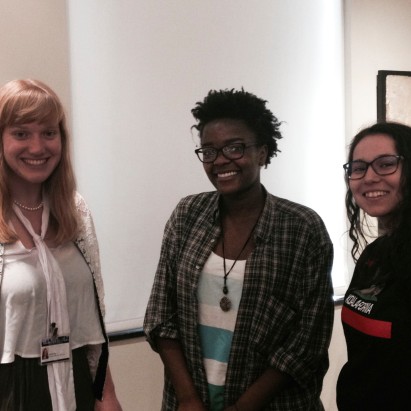
The Amherst students, Alexis (Alex) Teyie ’16 and Cosette Lias ’17, meet for the first time on Tuesday, Jan. 5, at the Mead Art Museum, a day after returning to campus from winter break. It’s “Interterm,” the lull between fall and spring semester when short noncredit courses are offered for students who come back to school early for the chance to do or learn something unique, beyond the usual curriculum.
“The Art of Writing for Children” was the brainchild of Keely Sarr, a recent Cornell University grad who’s been the Mead’s assistant museum educator since 2014. She majored in creative writing and art history, and is a veteran writer and performer in Cornell’s famous 24-Hour Playfest.
Day 1
After introductions, Keely leads the students around the museum pointing out the artworks that are most popular with young visitors. For example, children love Thomas Cole’s magnificent painting The Past (1838) that features a castle and jousting match. They’re drawn by Cole’s vibrant colors, the canvas’s great size (40 1/2 x 60 1/2 in), and the festive feeling of the scene.
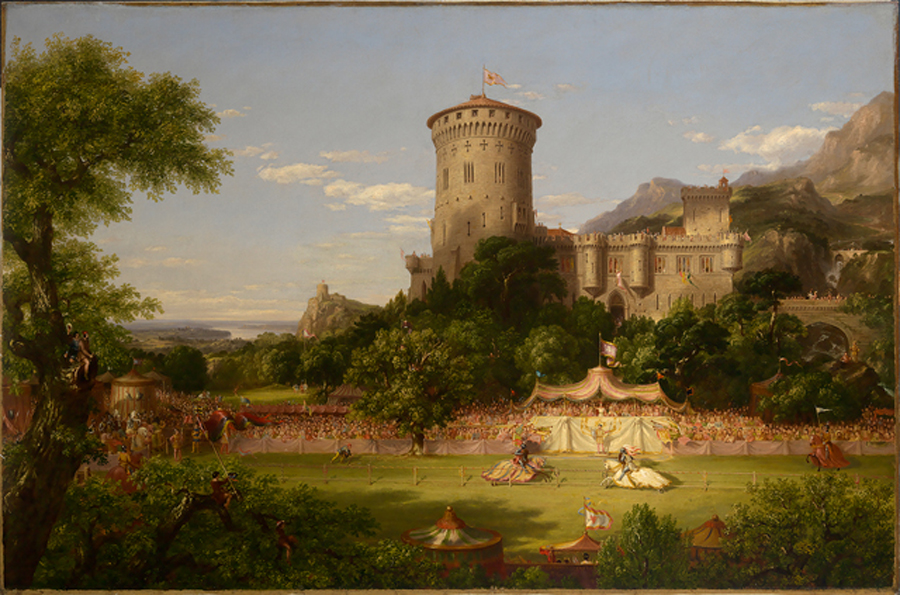
The group also looks over art-museum picture books for inspiration. One they particularly admire is The Museum Book written by Jan Mark and illustrated by Richard Holland.
Both Alex and Cosette are interested in writing and have substantial skills in drawing and painting, and Keely has previous book-design experience, as the designer of Dress Mead Up (2014), the book of paper dolls that features artwork by Amherst graduate María Darrow ’15.
Day 2
The second day is dedicated to making major decisions about the shape of the book. The first question is whether to write the book as fiction or nonfiction. Everyone votes unanimously in favor of fiction.
Next, they have to decide on a main character. Inspired by works on the walls, and thinking how important it is to focus on what children have already shown an interest in at the Mead, everyone decides to base the story on the adventures of the male hummingbird that dominates this oil painting on view at the Mead:
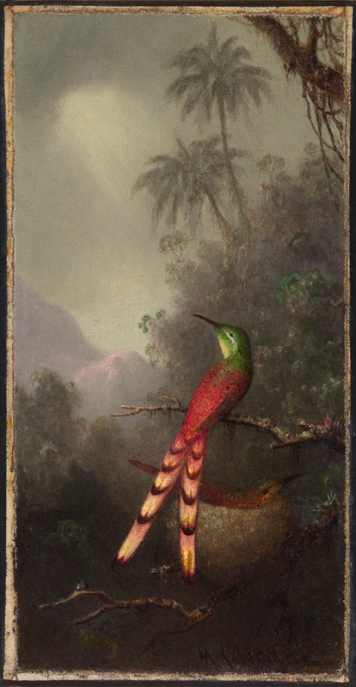
The painting, by Hudson River School artist Martin Johnson Heade (1819–1904), is titled Red-Tailed Comet (Hummingbird) in the Andes, and it’s one of the Mead’s best-known nineteenth-century American oil paintings.
In the proposed picture book, it’s decided that the hummingbird will fly south for the winter, taking a shortcut through the museum. (“Shortcut,” they decide, will be the title of the book.) In the end he’ll arrive at his own painting, where his companion, the female hummingbird depicted in the nest of Red-Tailed Comet, welcomes him home. Along the way, the hummingbird, named Comet, will make stops in other “painted worlds.”
There’s no question that young visitors to the Mead do love Heade’s hummingbird. Here are some drawings they’ve made of him in the recent past:
The students decide to illustrate the story in mixed media using oil pastels and photographs of museum works. The main character will be drawn by hand, and the image rendered digitally so it can be manipulated throughout the pages. The students will do the drawing, while Keely gets to work on the pages and cover using InDesign.
A map of pages is drawn up as the group agrees on the arc of the hummingbird’s story.
Day 3
Today the group works together to sketch out the entire plot. Alex then takes the lead in writing the actual text, which comes to about 300 words. (With a bit of editing later, the final word count will be just under 300.) Meanwhile, Cosette produces a watercolor of the front of the Mead, incorporating a photograph of the door, with its marble pediment. She adds other collage elements to the finished watercolor, including details from images of artworks in the Mead’s collection.
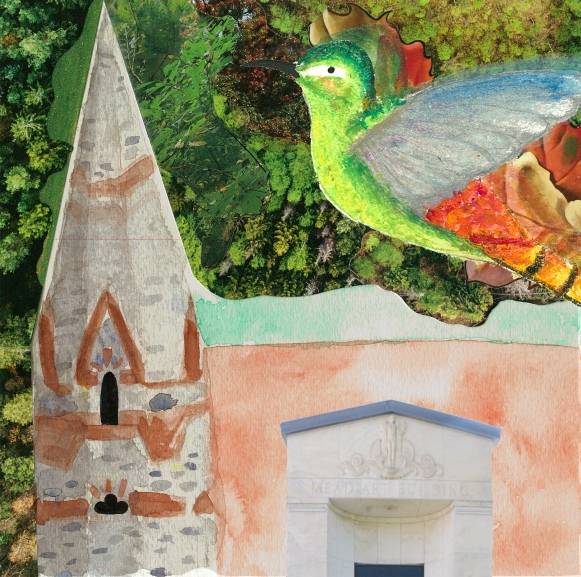
Day 4
On the last day of the class, Cosette completes pastel renditions of Comet. Later, using the photographed images she has scanned, Keely places the bird in various settings. He can fly over the Mead (above) or into this painting, Frederic Edwin Church’s Al Ayn (The Fountain):

It’s a bit more challenging to spot Comet on this page, which makes use of a nineteenth-century woodblock print by Japanese artist Yasuji Inoue titled The Azuma Restaurant:
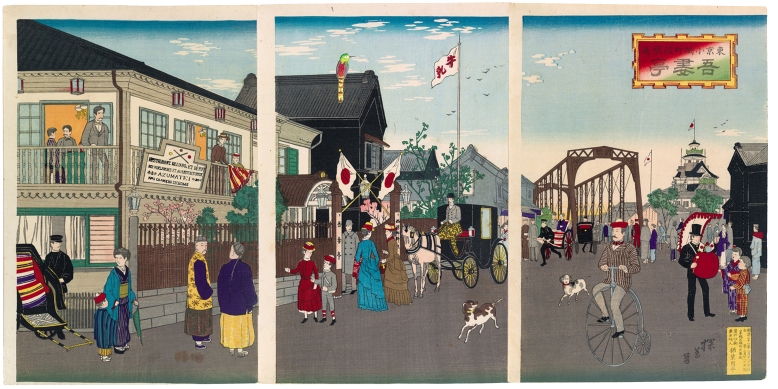
Alex, Cosette, and Keely review the text together and give it a final polish, with the addition of alliterative elements (“fly south before the winter froze all his feathers”) and transitions that enhance the flow and make it fun to read.
In designing the book’s cover, Keely draws on eight Mead artworks — one for each letter in the title. Look closely and you see Jean François Millet’s Peasant Woman Raking in the “S,” a seventeenth-century Persian bowl in the “H,” and so on.
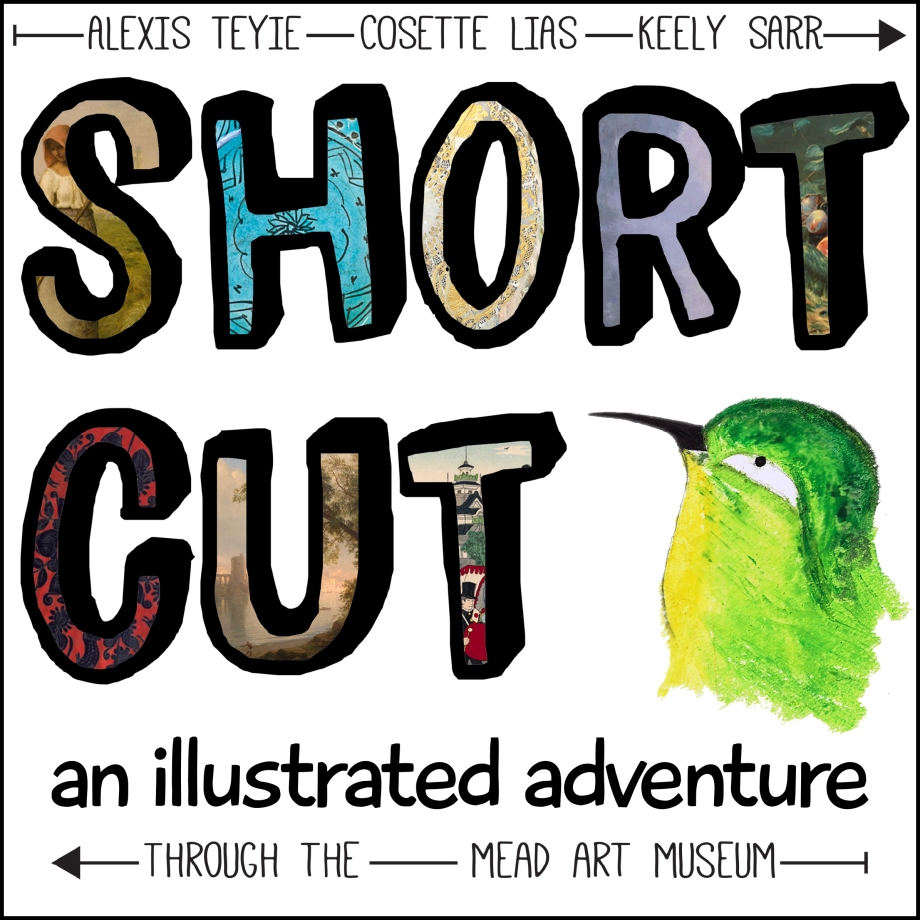
To further encourage close looking, Alex, Cosette, and Keely include an exercise in the back of the book that asks readers to find certain objects sprinkled throughout the illustrated pages. A full index of all the works represented in the book is included as well.
Conclusion
A local printer will carry out the last step in the production process. At sixteen pages long, the book will be perfect for the hundreds of children who visit the Mead with school groups or their families. Tours for school groups are often led by Amherst College students on Team Mead, the trained guides who, in addition to offering tours for museum visitors, host evening programs for their fellow students at the museum.
Team Mead is organizing a book launch of Shortcut as part of the Gallery Gala that will take place Tuesday, Feb. 23, at 7 pm at the Mead.
— Sheila Flaherty-Jones




Please tell Professor Lopez that my only regret in graduating 55 years ago, is that I didn’t have a chance to take this class at Amherst College! what a great opportunity for students. How museum education has changed for the better! Latin American art history graduate from UT Austin. Honore David